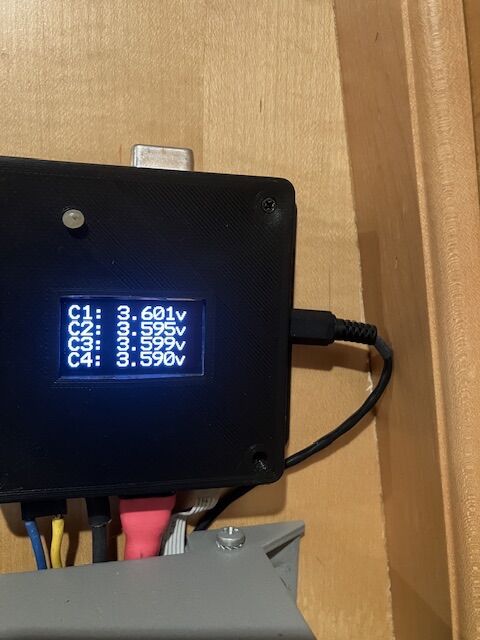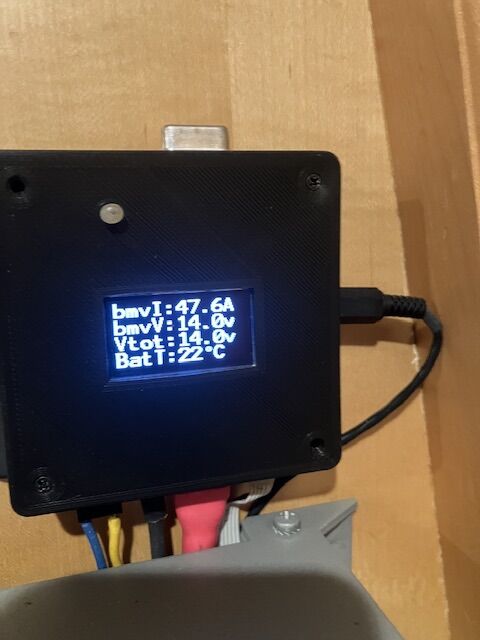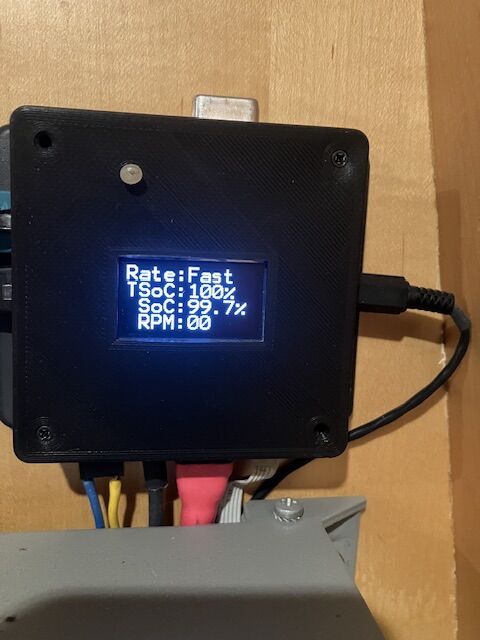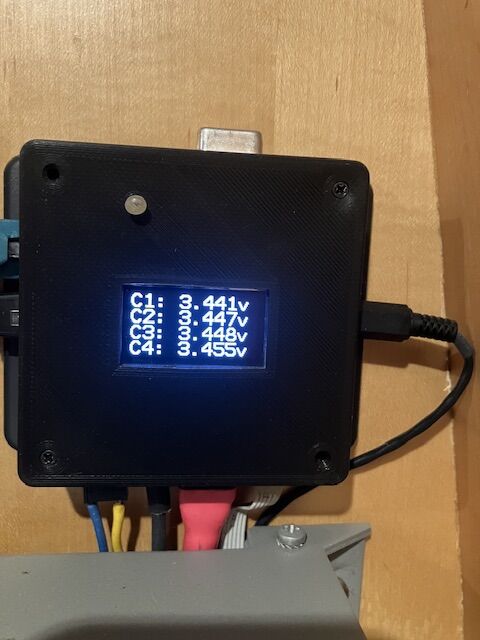-
Posts
23,321 -
Joined
-
Last visited
-
Days Won
119
Content Type
Profiles
Forums
Events
Gallery
Blogs
Store
Everything posted by nicknorman
-

Gas oven and grill issue
nicknorman replied to rustypaperclip's topic in Boat Building & Maintenance
There are a few possible different technologies for flame failure detection, one is a thermocouple that gets heated, a small voltage is produced that keeps the gas valve open. It takes a few seconds for the thing to be heated enough. If the flame isn’t really playing on the probe, or the probe is generally “tired” then it can be slow or malfunction. As mentioned, if the flame isn’t playing on the probe this is usually because something is upsetting the flow of gas and/or air. Dirt or corrosion in the jet and burner. Another technology is a flame conductivity check - an electrode is bathed in the flame which also reaches the metal of the burner. The flame is a plasma which is highly conductive and the system detects low resistance and keeps the gas valve open. This type of system needs a power supply (battery or supply from the boat) , whereas the first I mentioned doesn’t. The latter generally uses the sparking (lighting) electrode as the flame probe, and the flame shape is more critical than the thermocouple as the flame has to touch both the electrode and the burner metal. But again, dirt and corrosion in the jet and burner are usually at the root of the problem. -
You can lock up from the river to Stourport basin using either the wide locks or the narrow ones. They are in parallel. Narrowboats should use the narrow locks to save water. But the Staffs and Worc after Stourport basin is narrow only so you can’t go beyond the basin.
-
No I didn’t. The IR is very small and I can’t see that there’s much variation. Probably more variation in the interconnect / connection resistances. And also IR is made up of at least a couple of things, one being the ohmic resistance and the other being the “chemical resistance” ie the reaction rate. Even if the former is fairly static, the latter won’t be - varying with temperature, and non-linearly with load. Possibly it might be relevant if one was operating the cells at 1C rates or higher, but the max I get to is about 0.35C and that only for short periods (electric kettle), so I can’t see that slight variations in IR are going to be consequential.
-
At a loose end on the boat today in the marina so I thought I’d take the battery up to 100% again to see how the balancing is. And also to demonstrate that balancing is only appropriate right at the top. The following pics taken of the BMS display during the very late stage of charging. In the first pic you can see the cell voltage order is 1,2,3,4 And so you might think that cell 4 needs a bit taking out of it. Also of note is that the battery is now 99.7% SoC and yet the voltage is not that high yet - see other screens from BMS.The last bit of voltage gives very little extra charge… But right at the end, the cell voltage order is quite different at 4,2,3,1. So the lowest cell from before is now the highest, and vice versa. So if anything cell 1 needs a bit taking out, although the split of 11mV is below my threshold for activating balancing.
-
It goes with the territory of being a human being evolved from cavemen when anyone not in your clan was the enemy as they competed for your food and women. Some people struggle to move on from their ancient ancestors! We got the same kind of prejudice about our choice of boat builder, even though he made great boats and I have never encountered an “up themselves” owner.
-
Exactly what I was thinking.
-
Possible yes, but not normally unless very high usage. I’d say more like 10 years between repacking as an average with moderate use. I think you over-analysed my thinking a bit! If you have 2 pack blacking as we do, the boat comes out every 5 or 6 years. But my point was really that repacking is a trivial expense unless you also have to get the boat out of the water to do it.
-
Yes. Be aware that the packing comes in different sizes and you can get graphite-loaded or normal. Check the position of the pusher/stud length protruding and make a judgement call as to whether to repack. Since it is much easier to do this out of the water, and cheap, I’d suggest doing it anyway if it’s more than about 1/2 worn.
-

How to orientate the split pin at the end of prop shaft.
nicknorman replied to Gybe Ho's topic in Boat Building & Maintenance
No I don’t think it was rubbish, the point about the castellated nut (or its absence) was cogent. I think the point is to try to avoid the nut being able to rotate a bit, which could cause fretting especially in an application where the direction of rotation / load reverses. Whether the tangs are bent circumferentially or radially is not significant since the bending is only to stop the pin from sliding out and there is no significant force trying to make that happen - in fact the offset mass of the pin is only going to pull it in when rotated fast. But locking things subject to heavy load only by means of a split pin isn’t great design, the primary means should be friction and bolt stretching, which admittedly is tricky with a fairly short “bolt” and dissimilar metals (with different thermal expansion coefficients). But fortunately the tapered shaft adds plenty of friction! -

How to orientate the split pin at the end of prop shaft.
nicknorman replied to Gybe Ho's topic in Boat Building & Maintenance
Quite possibly, hard to see from the photo. But my point wasn’t about the micro detail of that particular pin, more about the principle of the orientation of the pin. I didn’t make that clear, but it was the premise of the question. As you say, of course the pin should be the right size (snug fit) for the hole, and spilt pins shouldn’t be reused. All that said, it has obviously had some use and hasn’t come adrift so it is probably adequate for the purpose. -

How to orientate the split pin at the end of prop shaft.
nicknorman replied to Gybe Ho's topic in Boat Building & Maintenance
Speaking as a licensed aircraft engineer, I would say that there is nothing wrong with the way the split pin is inserted. An alternative way is to have the folded head of the pin rotated 90degrees and then one leg of the pin is bent back over the end of the shaft, the other has to be cut right down and is poked back towards the prop. But the bending is only to stop the pin sliding out. With the latter method the head does tend to sit in more neatly into the nut slot, but in terms of security it makes no odds. As mentioned it’s a safety locking thing, not the primary means of avoiding the nut undoing - the latter being achieved by tightening the nut! -
Yes the 30mV was the difference between the highest 3P group and the lowest 3P group. As you know the curve of voltage against SoC is very steep around 3.55 to 3.6v so this represents very little charge. The lost capacity is really either of the things you mentioned and would manifest itself at the bottom end when the 3 cells would get to minimum voltage whilst the 4th still had a bit of usable. So only relevant if you cycle between 100% and zero%. I estimated it on how much charge had to be taken out of the high group by the balancing resistor. It’s my own design of balancing, devised before I realised that cells don’t go much out of balance and there is no need for high currents. But also it doesn’t require the cells to be held at high voltage whilst the balancing takes place. When the first cell hits 3.6v it looks at the differences between the lowest cell group and the other 3 cell groups and calculates an estimated time to turn on each balancing resistor even though charging has gone to float. It’s not perfect but closes the gaps at each iteration.
-
Just dragging up this old thread to mention that we are back down to the boat today and I thought I would check the top balance on my cells since I don’t think the balancing has kicked in for a couple of years. I took them to 100%, no balancing kicked in. But there was a bit of a voltage split (30mV or so max) and so I increased the charge voltage from 14.25 to 14.35. This pushed one cell up to 3.60v at which point the balancing kicked in. I have external balancing resistors that sink an amp or two. Not long afterwards the cells were balanced again and I would estimate that the out of balance was no more than 1 Ah. Which out of 600 Ah reflects a potential (and temporary) lost capacity of 0.17%. Not a big deal and in fact totally inconsequential. Bottom line is that 30mV right at the top (>3.55v) represents a very small imbalance in terms of Ah, and correspondingly only a tiny and not real-world detectable and reversible loss of capacity.
-
Alternative viewpoints are always respected! Obviously it depends on the application but the PICs have a much better selection of peripherals for low-power controller applications and are cheaper. I would agree that if you want to do graphics then the PIC is probably not the thing, but for small control applications I think it is. The Teensy 4.1 is very powerful in terms of processing power but has a price and power consumption to match and is more in the RPi SBC league than a microcontroller. I also vaguely remember assembly language but PICs these days are programmed by most people in C. I seriously dislike the arduino "sketch" thing and the abomination of C++ that is the default compiler, and the default IDE is atrocious (although other options are available). JLCPCB has been pretty good recently, my last order was sent on 21/5/25 and arrived 28/5/25. A recent oopsie with RS was to order a 3d accelerometer chip. Only after it arrived did I notice the dimensions on the foot print - 10 pads even though the overall dimensions were 2mm by 2mm. The pads were 0.2mm wide with 0.2mm gap between. Try doing that with black tape! But no probs for JLCPCB and a touch of solder paste, a steady hand and the hot air rework gun and it was done and functional.
-
Can I just mention JLCPCB in Hong Kong for bespoke printed circuit boards? There is no need for breadboard or rats nest things when you can get a top quality pcb with unlimited plated through vias, silk screen and solder mask top and bottom, for peanuts - literally £3.50 for 5 boards double sided or about £7.50 for five 4 layer boards, including shipping and import taxes. This is the latest board I sent away from, a 4 layer board for a PIC microcontroller thingy with a bluetooth module. And personally I would always use a PIC and not an Arduino, because the latter are quite limited.
-

LPG Over Pressure Cut Off (OPCO) Keeps Locking Out
nicknorman replied to Anonathy's topic in Boat Building & Maintenance
Ours is a Clesse. Been OK for 10 years of leisure use. I see BES sell them, so they are probably of adequate quality. -
Consider yourself mocked. Regarding JonathanA's point, it is a fair one but set against that, many people's inverters including ours are left on 24/7 when quite likely there is no-one around to notice the smoke coming out of it, let alone operate an isolator switch.
-
You can have 2 shunts in series. Each shunt drops a max of 50mV at it’s rated current, so with 2 you are only losing 0.1v and that only at the full rated current of the shunt. However I would argue against putting a 100A shunt in a circuit that can pass 200A or more. It would likely overheat. And bear in mind power dissipation is I^2R, ie double the current = 4 times the heat generated.
-

Source of "epoxy" sheets for DIY lithium battery build.
nicknorman replied to Gybe Ho's topic in Boat Building & Maintenance
I just used the bus bars supplied with the cells. Although they are solid copper (with a huml), not several strips of thinner copper. But the supplier didn’t provide enough strips for my configuration so I made some more from copper sheet which was quite thin so I used 3 or4 layers. I did wonder whether several layers was a good idea in terms of electrical conductivity, but if this is the new gold standard then I guess it’s ok. -

Source of "epoxy" sheets for DIY lithium battery build.
nicknorman replied to Gybe Ho's topic in Boat Building & Maintenance
I’m not clear what you mean by flexible busbars. My interconnects (bus bars if you like) are copper strips with a hump - the hump being there to allow a small amount of movement. Since the problem has never recurred in that or any other cell (and we are about 3 years further on now) I don’t think it was an installation issue, more like a manufacturing issue. -

Source of "epoxy" sheets for DIY lithium battery build.
nicknorman replied to Gybe Ho's topic in Boat Building & Maintenance
I’m not sure what the point of putting stuff between the cells is. I certainly didn’t. I have a wooden battery box and my only aim was to ensure the cells couldn’t move, so there was a bit of packing out the box with thin ply, but just to take up a bit of clearance.









